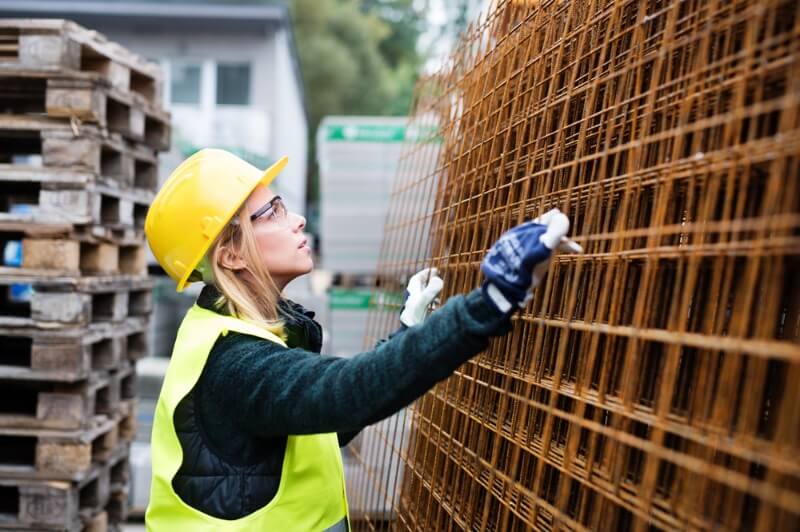Reinforced concrete is the backbone of modern construction, from towering skyscrapers to sturdy bridges. Combining concrete’s compressive strength with the tensile strength of steel creates a material capable of withstanding immense pressure. One essential element that enhances this strength is the use of mesh cages.
These steel frameworks, embedded within the concrete, improve durability, prevent cracking, and strengthen overall structural integrity. Whether used in foundations, floors, or walls, mesh cages ensure that reinforced concrete performs reliably, providing safety and longevity in every structure they support.
How Mesh Cages Improve Structural Integrity in Concrete
Reinforced concrete relies on two key materials: concrete, which handles compression, and steel, which manages tension. To maximise the benefits of both, various forms of reinforcement are used, including rebar and mesh cages. Each type helps distribute stress and strengthen the concrete, but mesh cages stand out for their versatility and effectiveness.
One of the primary ways mesh cages enhance concrete’s performance is by increasing its load-bearing capacity. Concrete is inherently strong under compression but weak under tension. Mesh cages, made of welded steel wire, add tensile strength and help the concrete resist cracking and structural failure under heavy loads. This reinforcement ensures that the concrete remains stable and intact, even under stress.
In foundation work, mesh cages play an equally critical role. For large-scale buildings and infrastructure projects such as bridges or highways, a solid foundation is essential. Mesh cages reinforce the foundation so it can withstand the weight of the entire structure and prevent shifting or sinking over time. Without this added stability, even well-designed structures risk developing foundational weaknesses. Mesh cages provide the necessary reinforcement to ensure both durability and safety, resulting in reliable, long-lasting construction.
Types of Mesh Cages: Welded vs. Weldless
When reinforcing concrete, mesh cages are typically available in two types: welded and weldless. Each type offers unique advantages depending on project requirements.
Welded mesh cages are made from steel wires welded together at each intersection. They provide excellent strength and uniformity, making them ideal for large-scale construction projects that demand consistency and precision. These cages are commonly used in foundations, floors, and slabs because they create a stable and uniform reinforcement framework.
Weldless mesh cages, on the other hand, are made from steel rods or wires tied together rather than welded. This approach offers more flexibility, which is beneficial for projects that require custom shapes or on-site adjustments. Weldless cages are typically used when reinforcement must be adaptable, such as in smaller or complex structures. Choosing between welded and weldless mesh cages depends on the specific project’s strength, flexibility, and design needs.
Enhancing Durability and Longevity
A key benefit of mesh cages in reinforced concrete is their ability to enhance structural durability. Steel mesh cages are often coated or manufactured using corrosion-resistant materials, allowing them to endure harsh environmental conditions, including moisture and chemical exposure. This protection prevents the steel from rusting, which could otherwise weaken the concrete over time.
Mesh cages also help prevent cracks from forming. While concrete is strong in compression, it can develop cracks under tension. By distributing stress evenly, mesh cages minimise the chances of cracking and ensure that the structure retains its strength and integrity. This capability not only improves longevity but also helps the structure perform effectively under heavy loads or during thermal expansion and contraction.
Together, these qualities make mesh cages an essential component of durable and reliable reinforced concrete construction.
Mesh Cages in Seismic Design and Safety
In regions prone to earthquakes, mesh cages are crucial for reinforcing concrete structures against seismic forces. They significantly improve a building’s resistance to ground motion by absorbing and distributing the energy generated during seismic events. The steel reinforcement adds tensile strength, helping the concrete withstand tension and reducing the risk of cracking or failure.
Mesh cages also contribute to structural flexibility, a vital characteristic for earthquake resistance. Buildings in seismic zones must be flexible enough to absorb movement without collapsing. Mesh cages enable this flexibility while maintaining structural integrity, allowing the building to move safely with the ground rather than against it.
By incorporating mesh cages, engineers can design safer, more resilient buildings that protect both lives and property.
Cost-Efficiency and Construction Time
The use of mesh cages in reinforced concrete provides notable cost savings and accelerates construction. Unlike traditional reinforcement methods that require more labour and time to install rebar, mesh cages are quicker to assemble. The prefabricated mesh can be easily unrolled, shaped, and positioned, reducing manual labour and shortening the overall building process.
Mesh cages also promote material efficiency. Since they are pre-engineered and manufactured in standard sizes, waste is minimised, and materials are used more effectively. This streamlined approach reduces costs and saves time in sourcing, transport, and fabrication.
Another advantage is the ease of design integration. Mesh cages can be adapted to a wide range of construction designs, from residential buildings to large commercial developments. Their flexibility simplifies the reinforcement process, leading to faster project completion and improved construction efficiency.
Mesh Cages Are Essential for Stronger, More Efficient Concrete Structures
Mesh cages are fundamental to achieving strength, durability, and efficiency in reinforced concrete. They improve load-bearing capacity, prevent cracking, and enhance flexibility in structures exposed to environmental stress or seismic activity. By reducing construction time and material waste, mesh cages also deliver measurable cost benefits.
Whether welded or weldless, these reinforcements are indispensable in creating structures that last longer and perform better. Mesh cages are a cornerstone of modern construction, providing safety, stability, and efficiency in every project.
